Oak Lumber
- October 5, 2023
- 0 comment
Oak lumber is derived from oak trees, which belong to the Quercus genus and are known for their dense and durable wood. The two primary types of oak lumber are red oak and white oak, each possessing unique qualities. Red oak, with its distinctive pinkish tint, tends to have a more open-grain pattern. White oak, on the other hand, showcases a slightly darker color and a more closed grain, making it particularly popular for finer woodworking projects.

One of the standout features of oak lumber is its exceptional strength and durability. Oak wood is renowned for its ability to withstand heavy loads and resist decay, making it a preferred choice for various applications. It is commonly used in construction for structural elements like beams and posts, where its strength ensures longevity and stability. Additionally, oak lumber is highly prized for furniture making. Craftsmen value its robust nature, allowing for the creation of enduring pieces that can withstand the test of time.
Beyond its practical benefits, oak lumber is celebrated for its aesthetic appeal. The wood exhibits a range of warm tones, from light tan to deep reddish-brown, enhancing its visual allure. The natural beauty of oak makes it a popular choice for flooring, cabinets, and other interior applications. Its grain patterns, whether open or closed, contribute to the unique character of each piece, adding a touch of sophistication to finished products.
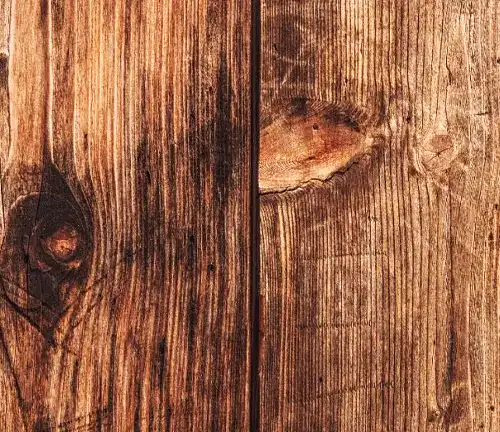
Moreover, oak lumber’s resistance to insects and decay makes it suitable for outdoor projects such as decking and fencing. The wood weathers gracefully over time, developing a patina that adds to its charm. This adaptability to both indoor and outdoor environments further extends oak lumber’s versatility and desirability in the realm of woodworking and construction.
| Specification | Description |
| Wood Type | Oak (Quercus genus) |
| Strength | High tensile and bending strength |
| Density | 40-45 lbs/ft³ (641-721 kg/m³) |
| Hardness | Janka: 1,325 lbf (5,920 N) |
| Modulus of rupture | 12,000-15,000 psi (82.7-103.4 MPa) |
| Modulus of elasticity | 1,600,000-1,800,000 psi (11.0-12.4 GPa) |
| Moisture content | 6-12% |
| Shear strength | 800-1,100 psi (5.5-7.6 MPa) |
| Color | Light brown to reddish brown |
| Texture | Coarse |
Brief History
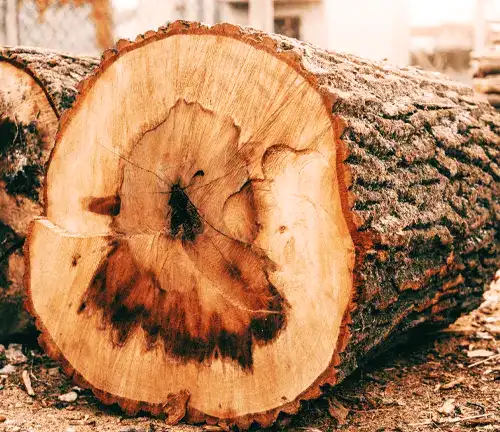
Oak lumber has earned its place as a timeless classic in the world of woodworking and construction. With a rich history dating back centuries, it has been a preferred choice for artisans and builders alike. Oak, primarily sourced from the Quercus genus of trees, boasts qualities that have made it a cherished material throughout history.
Color/Appearance
Oak lumber exhibits a stunning range of colors. Red oak, known for its pinkish undertones, offers a warm and inviting appearance, while white oak boasts deeper, darker hues. This diversity allows woodworkers to choose the perfect shade to complement their projects, from light tan to rich reddish-brown.
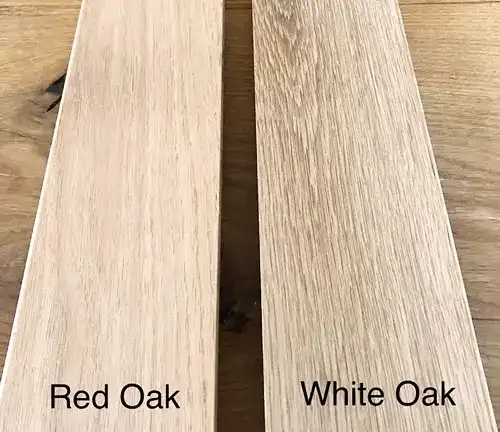
Grain/Texture
The grain pattern of oak lumber is another distinctive feature. Red oak presents an open grain that adds character to the wood, while white oak displays a closed grain, giving it a smoother texture. These patterns contribute to the unique aesthetics of oak, making it highly desirable for both rustic and refined applications.

Durability

Oak lumber is renowned for its remarkable durability. It boasts natural resistance to decay and insect infestations, making it an excellent choice for applications where longevity is crucial. Its resilience to wear and tear ensures that oak furniture and structures endure for generations.
Rot Resistance
One of oak lumber’s most celebrated attributes is its exceptional resistance to decay and insects. This natural durability ensures that oak maintains its structural integrity even in challenging outdoor environments, making it a top choice for decking, fencing, and other outdoor projects.

Workability
Oak lumber is well-regarded for its workability. It can be easily machined and shaped using both hand and machine tools. While its density requires some effort in cutting and carving, the end result is often worth the investment in time and craftsmanship.
Allergies/Toxicity
Although oak is generally considered safe to work with, some individuals may experience allergic reactions when handling it. Proper safety measures, such as wearing a mask and protective gear, can mitigate potential risks.
Sustainability
Sustainability is a growing concern in the lumber industry, and oak faces challenges in this regard due to slow growth rates. However, responsible forestry practices and replanting efforts are helping to ensure a more sustainable future for oak.
Pros and Cons
Pros
- Durability: Oak lumber is renowned for its exceptional durability. It has a natural resistance to decay and insects, making it a durable choice for both indoor and outdoor applications.
- Aesthetic Appeal: Oak’s distinct grain patterns and a wide range of warm colors contribute to its aesthetic appeal. The wood takes stains and finishes well, allowing for customization to suit various design preferences.
- Strength: Oak is a hardwood known for its strength. This makes it suitable for applications where structural integrity and load-bearing capacity are crucial, such as in construction for beams and posts.
- Versatility: Oak lumber is versatile and can be used in a variety of projects. It is commonly employed in furniture making, flooring, cabinetry, and even in fine woodworking due to its workability.
- Workability: While oak is a dense wood, it is still workable with both hand and machine tools. It can be shaped and carved to create intricate designs, adding to its appeal for craftsmen.
- Resale Value: Furniture and structures made from oak often retain their value well over time. The durability and timeless aesthetic of oak contribute to its lasting appeal.
Cons
- Density: The density of oak lumber can be a drawback for some woodworkers. It may require more effort to cut and shape compared to softer woods, potentially leading to increased tool wear.
- Cost: Oak lumber, especially high-quality grades and wider planks, can be relatively expensive. This cost is a consideration for projects with budget constraints.
- Sustainability Concerns: Some types of oak face sustainability challenges due to slow growth rates. While efforts are made to promote responsible forestry practices, concerns about the environmental impact persist.
- Allergic Reactions: While uncommon, some individuals may experience allergic reactions when working with oak. Taking proper safety precautions, such as wearing a mask, can mitigate this risk.
- Color Variation: While the variety in color is often considered a pro, it can also be a con for some projects where a consistent color is desired. Different batches of oak lumber may vary in color and appearance.
- Weight: Oak is a heavy wood, and this can be a consideration for certain applications where weight is a concern, such as in the construction of furniture that needs to be easily movable.
Pricing/Availability
Oak lumber’s popularity has led to its widespread availability, making it relatively easy to find. Pricing varies depending on factors such as the type of oak, grade, and thickness, but it remains competitive in the market.
Importance of Oak Lumber in the Lumber Industry
Oak lumber holds a significant place in the lumber industry due to its versatility and enduring appeal. Its use spans from construction, where it forms the backbone of structural elements, to fine woodworking, where it graces high-end furniture. Its resilience, workability, and aesthetic qualities make it a prized choice for artisans and builders alike.
Harvesting and Processing
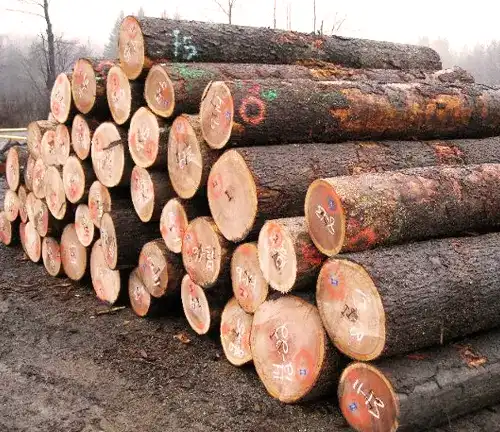
The process of harvesting and processing oak lumber involves careful selection of mature trees, which are then felled, sawn into planks, and kiln-dried to achieve the desired moisture content. This meticulous process ensures the wood’s stability and quality.
Common Uses
Oak lumber finds its way into a wide array of applications. In construction, it serves as beams, posts, and flooring. In fine woodworking, it’s the choice for crafting exquisite furniture pieces. Additionally, it’s a favorite for cabinetry, paneling, and even shipbuilding due to its durability.


Other Uses
Oak lumber, known for its durability, extends its utility beyond woodworking. It is employed in agriculture for robust implements and fence posts, offering resilience to wear and environmental elements. The wood’s resistance to decay finds application in erosion control structures like retaining walls. Oak becomes a sculptor’s choice, providing a sturdy foundation for artistic creations. In the wine industry, it adds flavor not just in barrels but also as staves and planks. Additionally, oak contributes to vintage vehicle restoration, enhancing authenticity in interiors. These diverse uses highlight oak lumber’s versatility, showcasing its adaptability in various industries and creative endeavors.


Different Types of Oak Lumber
White Oak Lumber
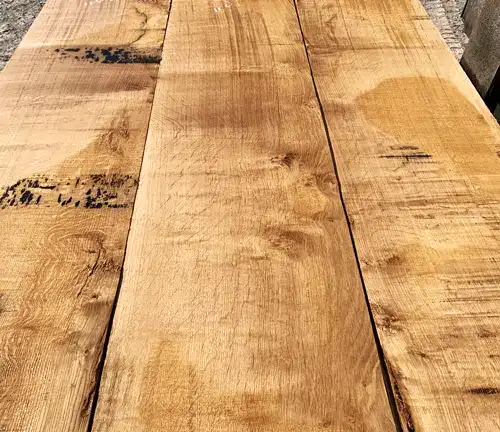
- Characteristics: White oak is known for its light color, ranging from light tan to pale yellow-brown. It has a straight grain and a medium to coarse texture.
- Properties: White oak is durable and resistant to decay. It is also less porous than red oak, making it more water-resistant.
- Uses: White oak is commonly used for furniture, cabinets, flooring, barrels, and outdoor applications.
Red Oak Lumber

- Characteristics: Red oak has a pinkish to reddish-brown color with a straight grain. It has a coarse texture.
- Properties: Red oak is less durable than white oak but is still suitable for many applications. It has a more porous structure, which can make it more susceptible to water damage.
- Uses: Red oak is widely used for furniture, flooring, cabinets, and interior trim.
Live Oak Lumber

- Characteristics: Live oak is an evergreen oak species with a more irregular and twisted grain. It has a darker color than white oak.
- Properties: Live oak is extremely strong and durable, making it resistant to decay and insect infestation.
- Uses: Historically used for shipbuilding, live oak is also used for outdoor furniture and heavy construction.
Black Oak Lumber

- Characteristics: Black oak has a dark brown to almost black color with a coarse texture. It may have yellow streaks.
- Properties: Black oak is moderately durable and has good working properties.
- Uses: Black oak is used for furniture, flooring, and cabinets.
Bur Oak Lumber
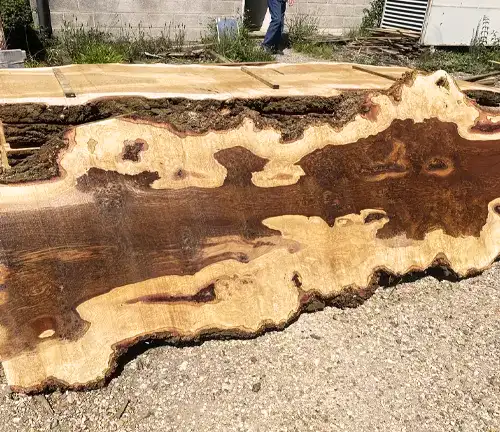
- Characteristics: Bur oak has a light to medium brown color with a distinctive grain pattern. It may contain burrs or knots.
- Properties: Bur oak is durable and resistant to decay.
- Uses: Bur oak is used for furniture, flooring, and decorative purposes.
Conclusion
Oak lumber’s enduring popularity in woodworking and construction is a testament to its remarkable qualities. Its rich history, exceptional properties, and timeless appeal have cemented its status as a cornerstone material in the industry. As sustainability practices evolve and craftsmanship endures, oak lumber continues to hold a special place in the hearts of artisans, builders, and enthusiasts, promising a legacy that will endure for generations to come.
Frequently Asked Questions (FAQs)
- Can oak lumber be used for outdoor sculptures?
Yes, oak lumber can be used for outdoor sculptures due to its durability and resistance to decay. Artists often choose oak for creating intricate outdoor artworks that can withstand exposure to the elements. - Is oak lumber suitable for crafting musical instruments other than guitars?
Absolutely! While oak is less conventional than certain tonewoods, it is occasionally used for crafting drum shells and percussion instruments. Its density contributes to the resonance and unique sound quality of these instruments. - Can oak lumber be used for flooring in humid climates?
Yes, oak lumber can be used for flooring in humid climates. White oak, in particular, is known for its resistance to moisture and decay, making it a suitable choice for flooring in environments where humidity levels fluctuate. - What makes oak lumber a popular choice for luxury vehicle interiors?
Oak lumber is prized for luxury vehicle interiors due to its rich appearance and high-quality finish. The wood’s elegance and durability make it a preferred material for veneers, contributing to the luxurious ambiance of high-end car interiors. - How does oak contribute to the aging process of wines in custom wine cellars?
Oak contributes to the aging process of wines in custom wine cellars through the presence of tannins in the wood. These tannins impart flavors and aromas to the wine, enhancing its complexity and character. Oak paneling and shelving create an environment conducive to this natural aging process.
Oak lumber stands as a timeless and versatile material in the world of woodworking. With its remarkable durability, distinctive grain patterns, and adaptability to various applications, oak has carved out a lasting legacy. From the elegance, it adds to fine furniture and architectural details to its resilience in outdoor structures and unique uses like wine aging, oak’s charm is enduring. As we appreciate its strength, workability, and aesthetic appeal, it’s clear that oak lumber is not merely a building material but an integral part of the artisan’s palette, contributing to the creation of enduring pieces that stand the test of time. Whether it’s the warmth it imparts to our homes, the character it lends to our crafts, or the flavors it introduces to our wines, oak remains a steadfast companion in the world of craftsmanship and design, leaving an indelible mark on the landscapes of both tradition and innovation.








Leave your comment